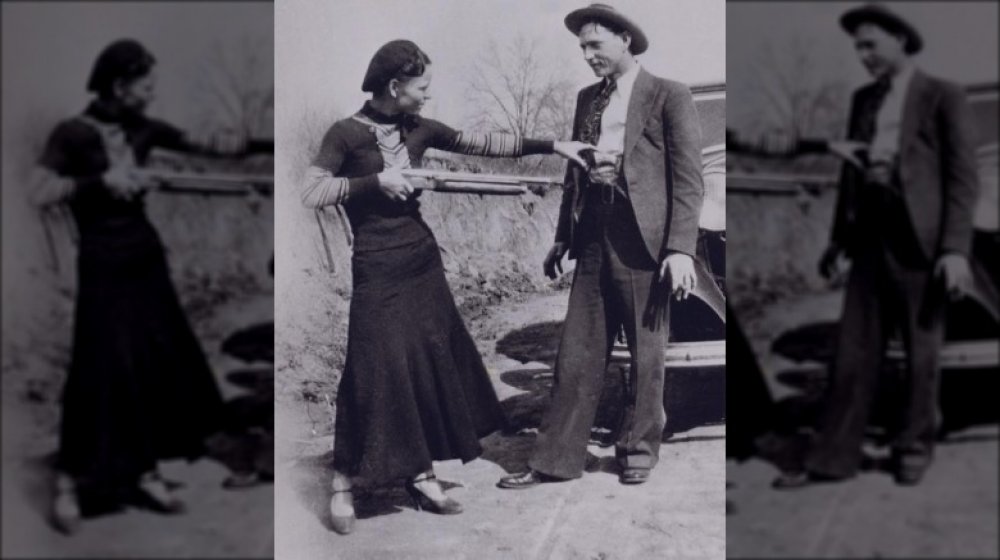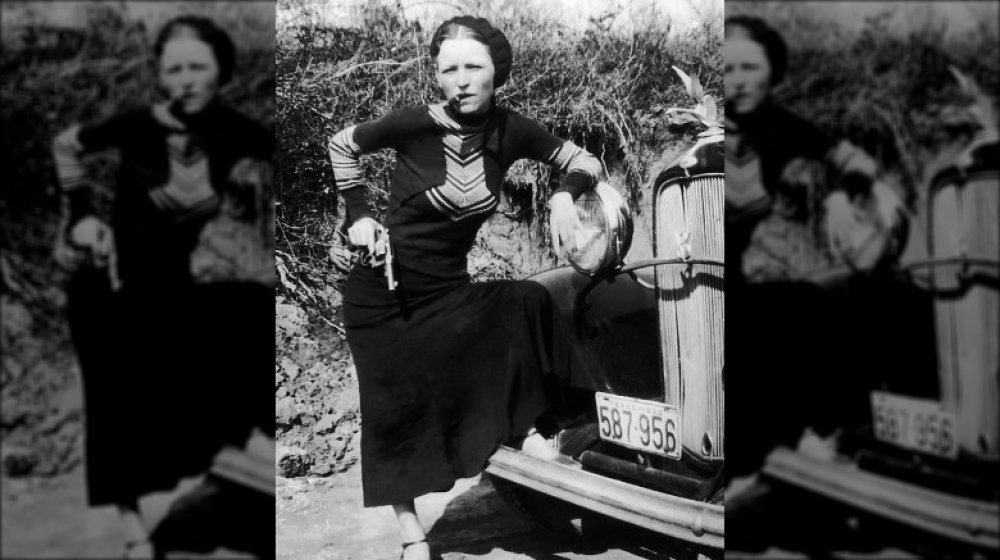The Truth About How Many People Bonnie & Clyde Really Killed
They certainly got off to a rocky start. Nineteen-year-old Bonnie Parker's husband was serving time for murder; 21-year-old Clyde Barrow was out of prison, briefly. Was it instantaneous attraction? Maybe. Shortly after they met, according to the FBI, Clyde was arrested for burglary. Bonnie smuggled him a gun in jail and he broke out, only to be recaptured. Two years later he was paroled and they reunited. It was 1932, the Great Depression was killing the dreams of everyday Americans, and the young couple — they never married — hit the road. Mostly they were thieves, specializing, often with other family members, in armed robbery. They weren't the organized looters of banks, like John Dillinger and his associates; a lot of it was knocking over small stores or gas stations. They committed burglary and stole a lot of cars. They were extremely well-armed — Clyde liked guns, especially the Browning Automatic Rifle, capable of firing 500 rounds a minute, with a magazine of 20 or 40 bullets, caliber 30.06. Shotguns and various handguns also came in handy. Because they shot people.
She didn't smoke cigars, either
Bonnie and Clyde are consistently credited with killing 13 people, nine of them law enforcement personnel. This number doesn't include Clyde's first murder, committed while in prison, of a fellow inmate who had been raping him. Another prisoner, already serving a life sentence, took credit for the killing. Despite staged photos for fun, per Smithsonian, sources are uncertain whether Bonnie actually wielded a gun, let alone shot anyone. In addition to the aforementioned murder while in prison, Clyde is known to have committed one other premeditated killing, in which he helped a friend kill the guard who had abused the friend in prison. The evidence is clear that Barrow's other killings were acts of desperation — during attempted escapes, or ill-timed confrontations, over the course of Bonnie and Clyde's two-year crime spree, from spring of 1932 until May 23, 1934.
Any is too many. Frank Hamer, former Texas Ranger, led the ambush that paid back Barrow and Parker with a hailstorm of bullets on a Louisiana backroad. Hamer wasn't taking any chances on being Number 14.

